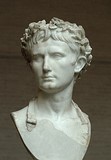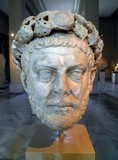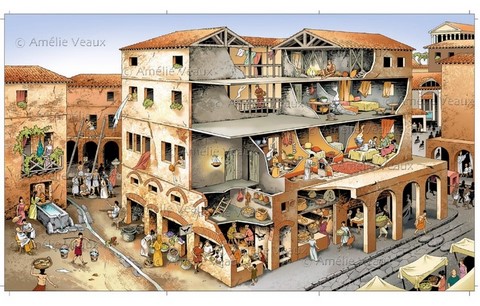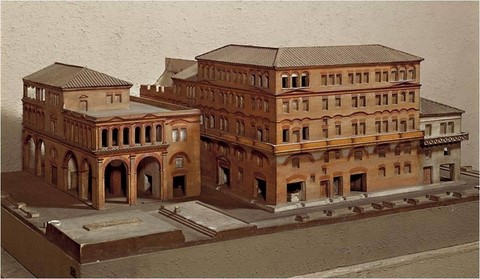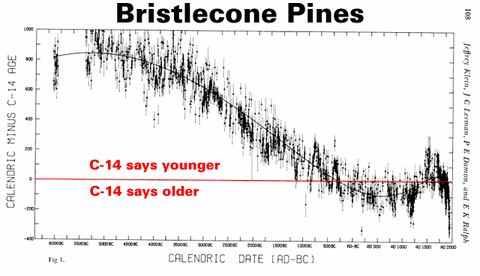The 1st Millennium AD chronology controversy
- Gunnar Heinsohn: Jerusalem in the First Millennium AD - Stratigraphy and the scholarly belief in Anno Domini chronology
- Gunnar Heinsohn: ANNO DOMINI and the distortion of scientific dating
- Gunnar Heinsohn: Did Comet Heinrich-Swift-Tuttle terminate Roman and global civilization?
- Gunnar Heinsohn: St Paul - did he live once, thrice or not at all?
- Justice for Jewish and Arab Histories
- Gunnar Heinsohn: Were there really no people in Poland between 300 and 600 AD?
- Gunnar Heinsohn: Ravenna and Chronology
- Gunnar Heinsohn: 10th century collapse - sources and archaeology
- Historial Evidence Without Archaeology: Jan Beaufort answers Trevor Palmer
- Gunnar answers Trevor on Writers and Re-Writers of the First Millennium
- Trevor Palmer: Writers and Re-Writers of the First Millennium (e-book)
- Rome and Jerusalem - a stratigraphy-based chronology of the Ancient World
- Gunnar Heinsohn: Augustus and Diocletian - contemporaries or three centuries apart?
- Gunnar Heinsohn: Justinian's correct date in 1st Millennium chronology
- Gunnar Heinsohn: The Stratigraphy of Rome - benchmark for the chronology of the First Millennium CE
- Gunnar Heinsohn: Polish origins
- Gunnar Heinsohn: Bede's missing metropolis
- Gunnar Heinsohn: Arabs of the 8th century - cultural imitators or original creators?
- Gunnar Heinsohn: Siegfried found - decoding the Nibelungen period
- Gunnar Heinsohn: Slavic chronological enigmas solved - Poland's Krakow in the 1st Millennium AD
- Gunnar Heinsohn: Arthur of Camelot and Aththe of Camulodunum
- Gunnar Heinsohn: Tenth Century collapse
- Gunnar Heinsohn: Ephesus in the 1st millennium AD - was it destroyed three times or once?
- Gunnar Heinsohn: Paper-making's 700 years secrecy
- Gunnar Heinsohn: how did so many Roman elements make it into the Viking Age?
- Gunnar Heinsohn: wrecked metropolises of the 1st millennium AD: a comparison
- Gunnar Heinsohn: in a nutshell - the revised chronology of the 1st millennium AD
- Gunnar Heinsohn: Archaeological Strata vs. Tree-rings: proposal for an experiment
- See also: A Carbon-14 Chronology
- Michael Baillie: Tree-ring and Radiocarbon Rebuttal of Gunnar's Phantom Time Hypothesis
- Ewald Ernst: Toppling Rome's Obelisks and Aqueducts
- Gunnar Heinsohn: 2nd Answer to Trevor Palmer
- Trevor Palmer's Response to Gunnar Heinsohn
- In Support of Gunnar Heinsohn: Jan Beaufort: Conspiracy or Religious History?
- Gunnar Heinsohn: Answer to Trevor Palmer: Rome's Stratigraphy belongs into the 8th-10th Century A.D.
- Trevor Palmer Challenges Gunnar Heinsohn's Latest
- The origin of the controversy: Gunnar Heinsohn's Latest
Gunnar Heinsohn: Jerusalem in the First Millennium AD - Stratigraphy and the scholarly belief in Anno Domini chronology
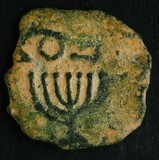
Gunnar Heinsohn: ANNO DOMINI and the distortion of scientific dating
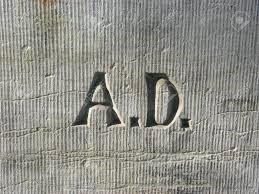
"The origin of AD dating is not verifiable before the 11th century AD (with the exception of some manuscripts that have never been analyzed scientifically). Thus, there is no place in the 1st millennium AD where historians or chronologists would have kept a complete record of the years AD 1-1000..."
Gunnar Heinsohn: Did Comet Heinrich-Swift-Tuttle terminate Roman and global civilization?

Gunnar Heinsohn: St Paul - did he live once, thrice or not at all?
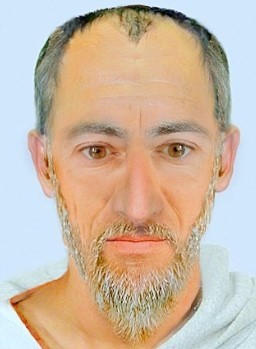
"It might come as a surprise, but outside our New Testament records we have very little additional historical information about Paul other than the valuable [although 300 years later; GH] tradition that Jerome [347-420 AD] preserves for us that he was born in the Galilee..."
Justice for Jewish and Arab Histories
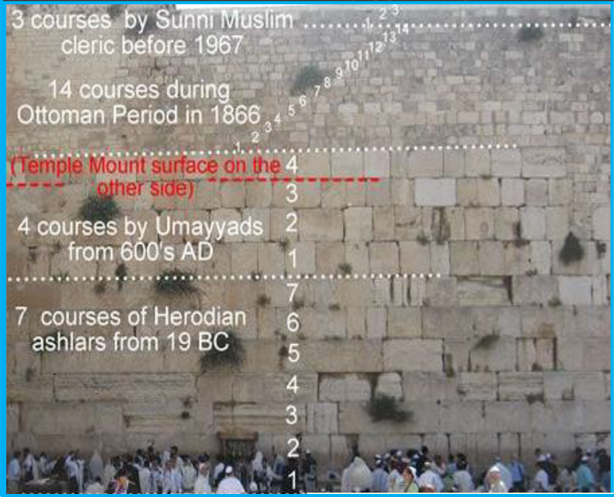
Gunnar Heinsohn: Were there really no people in Poland between 300 and 600 AD?
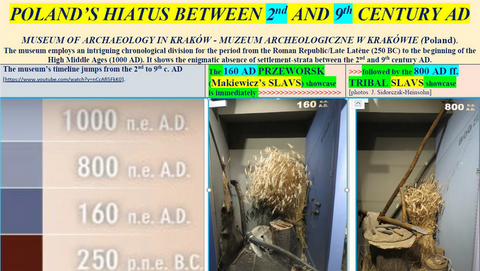
In a conference given at the Polish Naval Museum on July 7, 2020, Gunnar Heinsohn gives an overview of his First Millennium revised chronology from the standpoint of Poland...
Gunnar Heinsohn: Ravenna and Chronology
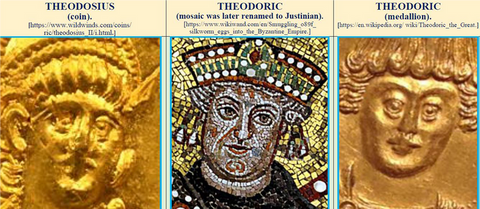
Gunnar Heinsohn’s RAVENNA AND CHRONOLOGY is a 100 page, abridged English version of his 550-page German manuscript WIE LANGE WÄHRTE DAS ERSTE JAHRTAUSEND? (How long did the First Millennium last?) Q-MAG.org will present RAVENNA AND CHRONOLOGY in three parts, abundantly illustrated.
I asked Gunnar Heinsohn if we may end up having to go back behind Michael Psellos (ca. 1018-1078 AD) and start A.D. history all over again? His answer was: YES! (...)
Gunnar Heinsohn: 10th century collapse - sources and archaeology
Historial Evidence Without Archaeology: Jan Beaufort answers Trevor Palmer

The present paper responds to Trevor Palmer's critique of a “re-writing” of the chronology of the first millennium AD. (...) I argue that the supposed consistency of
the primary sources is in fact an illusion produced by secondary literature. I prove this argument with Palmer's key witness against Heinsohn, the ancient historian Herodian.
Gunnar answers Trevor on Writers and Re-Writers of the First Millennium

Trevor Palmer's Writers and Re-Writers of First Millennium History gives his summary – diligently assembled over many years – of the historiography found in textbooks on the first millennium AD. How can I express a maximum of respect for his achievement? I can assure Palmer that from my entry into grammar school in 1953 until 2013 I not only learned that very historiography for my exams, but literally devoured it...
Trevor Palmer: Writers and Re-Writers of the First Millennium (e-book)

The reasons I had for writing this article are summarized on pages 4-5 of the e-book. Whilst I'm sympathetic in general towards unorthodox theories, I never, as a matter of principle, argue that any particular theory is right (or wrong)... I just try to ensure that as much relevant evidence as possible is brought out into the open, in a fair way, to enable informed debates to take place about individual theories, and for supporters of particular theories to be able to address apparent problems (...).
Rome and Jerusalem - a stratigraphy-based chronology of the Ancient World
Did the Romans nostrify the history of the Etruscans (Cullen 2018) to lengthen their own chronology? To put the question differently: Does one historical period appear twice in our textbooks? Do contemporary histories of Rome and Etruria mistakenly appear in chronological sequence...?
Gunnar Heinsohn: Augustus and Diocletian - contemporaries or three centuries apart?
Gunnar Heinsohn: Justinian's correct date in 1st Millennium chronology
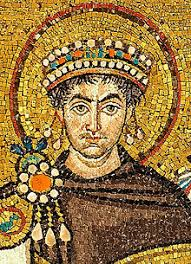
The 700 years from the Severan jurists (Imperial Antiquity) via Justinian quoting them (Late Antiquity) up to his laws in Greek (Early Middle Ages albeit in 2nd c. Greek) are due to simultaneity being turned into a continuum. All three periods immediately preceded the High Middle Ages of the 10th/11th c. CE....
Gunnar Heinsohn: The Stratigraphy of Rome - benchmark for the chronology of the First Millennium CE
How can Rome have history from 1 to 930s CE if it builds residential quarters, aqueducts, latrines, sewers, roads, ports, or even bakeries only from 1 to 230s CE?
Gunnar Heinsohn: Polish origins
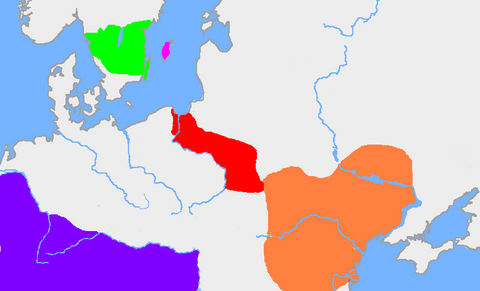
“The problem of the location of the earliest archaeological cultures which may be identified with the Slavs is one of the most controversial in Polish archaeology. Nevertheless, attention is drawn to some analogies observable in the Roman period [1st-3rd c.] and medieval pottery [8th-10th c.]”“
[Marcin Wołoszyn, Migration Period between Odra and Vistula, National Science Centre 2012, http://www.mpov.uw.edu.pl/en/thesaurus/tribes-and-peoples/slavs-].
x
Gunnar Heinsohn: Bede's missing metropolis

Beda Venerabilis (672-735 AD), in his Ecclesiastical History of the English Nation (II. 3), provided us with a description of Londinium in 604 AD: “Their metropolis is the city of London, which is situated on the banks of the aforesaid river, and is the mart of many nations resorting to it by sea and land.“ (...)
In the London area there are only two settlements that can be investigated for the description of Bede: Londinium of Imperial Antiquity (1st-3rd century AD) and Lundenwic of the Early Middle Ages (8th-10th century AD).
Gunnar Heinsohn: Arabs of the 8th century - cultural imitators or original creators?
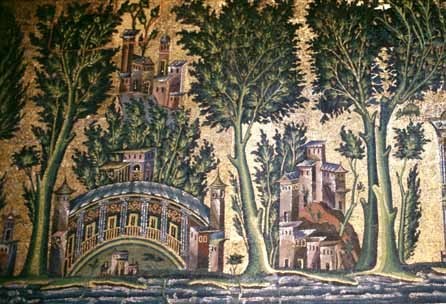
Among Jewish acceptors of Muhammad, Rabbi Shimon bar Yochai becomes significant for the chronology of Muhammad. During Imperial Antiquity (1st-3rd c.), Shimon was active after 70 CE (after the Roman destruction of Jerusalem’s Temple), i.e. during the 1st and 2nd century. He calls Muhammad "a prophet sent to Ishmael according to God's will", in other words, a representative of the God of the Jews for Arabs. Interestingly, however, the report on Rabbi Shimon's positive assessment of Muhammad comes from the Early Middle Ages (8th-10th c.) some 700 years later, precisely from the 8th century (Prawer/Ben-Shammai 1994, 304).
Gunnar Heinsohn: Siegfried found - decoding the Nibelungen period
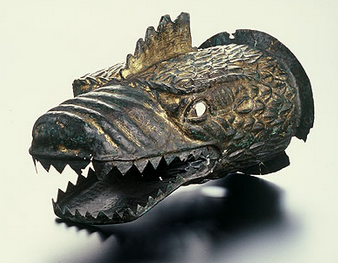
Gunnar Heinsohn: Slavic chronological enigmas solved - Poland's Krakow in the 1st Millennium AD
Gunnar Heinsohn: Arthur of Camelot and Aththe of Camulodunum
Gunnar Heinsohn: Tenth Century collapse
Gunnar Heinsohn: Ephesus in the 1st millennium AD - was it destroyed three times or once?
Gunnar Heinsohn: Paper-making's 700 years secrecy
Gunnar Heinsohn: how did so many Roman elements make it into the Viking Age?
Gunnar Heinsohn: wrecked metropolises of the 1st millennium AD: a comparison
Gunnar Heinsohn: in a nutshell - the revised chronology of the 1st millennium AD
Gunnar Heinsohn: Archaeological Strata vs. Tree-rings: proposal for an experiment
Tree-ring-daters do not agree on the number of years that can be substantiated for the 1st millennium CE. The majority is convinced that they have 1,000 characteristic rings that prove the 1,000 years required for a millennium, confirmed down to the last second by C14. Therefore, they are convinced that scholars living after the year 1000 CE had all the instruments available to construct the chronology from 1-1000 CE as dendro-chronologists find them in their textbooks. The full 1,000 year time-span did not go unchallenged.
Mainstream dendro-chronologists and dissidents alike, however, fail to inform the public that nowhere in the world has anyone ever discovered a single site that has building strata for a thousand years (intersected by three cataclysms) or for 782/703 years (intersected by at least two cataclysms) respectively, with remains of trees whose rings could be counted and sequenced, and whose organic substance could be carbon-dated.
Go to the article
Michael Baillie: Tree-ring and Radiocarbon Rebuttal of Gunnar's Phantom Time Hypothesis
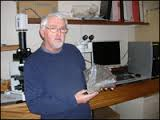
To whom it may concern.
Those who discuss the’ phantom time’ hypothesis enjoy semantic games with historical documents. However, scientists have their own approach to issues of chronology...
Go to the article
Ewald Ernst: Toppling Rome's Obelisks and Aqueducts

From the numerous remarks I have prepared to challenge Palmer’s views, I will focus here on the mysterious felling of Rome’s obelisks, columns, and aqueducts. Yet, as an exemplary illustration of the enormous material gaps in 1st millennium history, I want to shed some light on one of the best established European stratigraphies north of the Alps. It can be admired in Salzburg in Austria (Roman Iuvavum)....
Go to the article
Gunnar Heinsohn: 2nd Answer to Trevor Palmer
Trevor Palmer's Response to Gunnar Heinsohn
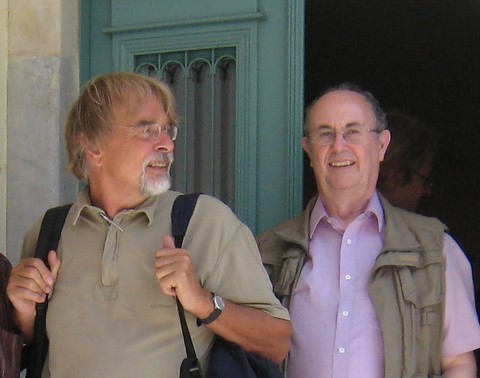
Dear Gunnar,
Your response to my article, "The Chronology of the Roman Emperors...", was, like all your writings on chronology, full of plausible and interesting arguments in support of a highly-original theory. However, it must be said that the article you refer to in your response seems different in several important respects from mine. Let's clarify a few points.
To start with, you wrote, "Trevor's impressive effort, however, only makes sense if he regards me as someone who wants to abandon genuine rulers, or even turn them into fictitious characters. Never, in scholarly exchanges of nearly half a century, have I come across a more profound misunderstanding".
Yet, in the introduction to my article, I wrote that you "propose that the emperors who had reigned in Rome from AD 1 to AD 230 [Augustus to Alexander Severus] were in fact contemporaries of emperors who had reigned in the east, supposedly from AD 290 to AD 520 [Diocletian to Anastasius I]". Does that suggest that I harbour a "profound misunderstanding" of your position...?
Go to article
In Support of Gunnar Heinsohn: Jan Beaufort: Conspiracy or Religious History?
Is religious, providentialist history the result of a conspiracy? If many people have the same fantasies about the past and write about them accordingly, have they then formed a conspiracy? If theological or political opponents attack each other with Pseudepigraphs, in order to lend an air of authority to their opinions, or to protect themselves against a charge of heresy, have they then conspired...?
Go to article
Gunnar Heinsohn: Answer to Trevor Palmer: Rome's Stratigraphy belongs into the 8th-10th Century A.D.

In his ”Chronology of Europe” (here on Q-Mag), Trevor Palmer has amassed (from mainstream history texts) long lists of emperors, popes and non-Roman chieftains of the 1st-6th centuries CE to underline the historical reality of these personalities.
Trevor’s impressive effort, however, only makes sense if he regards me as someone who wants to abandon genuine rulers, or even turn them into fictitious characters. Never, in scholarly exchanges of nearly half a century, have I come across a more profound misunderstanding...
Go to article
Trevor Palmer Challenges Gunnar Heinsohn's Latest
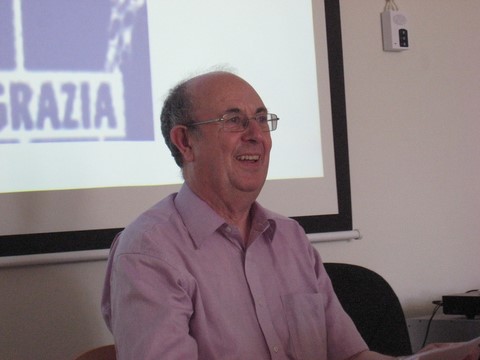
It is generally believed that, during the third century AD, the Roman Empire suffered a prolonged period of chaos. Emperor after emperor met violent deaths after brief reigns, and one civil war followed another. Was this just a time of social and historical confusion, or was it the origin of a major chronological anomaly? One who has argued for the latter scenario is Gunnar Heinsohn, who maintains that events at this time may have resulted in three phantom centuries being added to history...
Including:
- The Chronology of the Roman Emperors from the Reigns of Septimius Severus to that of Maurice, according to sources from the 4th to the 9th Century
- The Chronology of Barbarian Europe between the reigns of Theodosius and of Maurice
- The Establishment of a Frankish Kingdom in Gaul
- Popes of Rome


